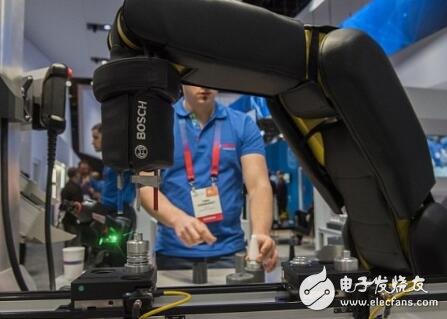Electronic skin, a system that allows the robot to create a tactile sensation. It has a simple structure and can be processed into various shapes. It can be attached to the surface of the device like a garment, allowing the robot to sense the location and orientation of the object and the hardness. The key to this technology is a composite material called QCT, developed by technicians at the Massachusetts Institute of Technology. Other similar inventions are electronic skins developed by Japan and Philips. The application of electronic skin is not limited to the medical field. Like the innovative scientific and technological achievements such as 3D printing and big data, electronic skin will bring qualitative changes to certain fields.
At present, even the most realistic and most bionic prosthetic in the world, it is difficult to achieve a breakthrough in touch. The electronic skin with tactile sensation can completely make the prosthetic understand the actions of touching, bending or pressing, and help the person with the prosthetic to restore the feeling.
Jumping out of the medical field, electronic skin will undoubtedly be a revolution in the field of research and development of intelligent robots. Although the robot design has already realized the functions of vision and hearing, and can carry out some complicated technical operations, but because the skin is just a neglected part of the development of robot technology, it directly leads to the cumbersome "armor" which is difficult to detect multi-directional tactile three-dimensional. Force, it is difficult to appreciate the difference in strength required to pick up an apple or a cup. Electronic skin with good pressure-sensitive properties and flexibility solves the problem of robot design, which helps robots to be sensitive to environmental information while giving them mechanical flexibility.
This is not the case. Bosch has demonstrated its smart robot-developed industrial robots at CES. According to the British Daily Mail, this technology helps promote the harmonious coexistence between people and machines.
According to Bosch, the robotic arm with electronic sensor skin can warn people when they are too close to the robot and stop moving before a dangerous accident occurs. This technology can be incorporated into everyday robotic systems to make robots safer to use. This new manufacturing robot with intelligent "skin" allows people to work next to industrial robots, eliminating the safety hazards of people and machines.
Usually, robots move in cages to avoid harming humans, but this technology provides a solution for robots to “get out of the cageâ€. Exhibitor Franz Schmidt demonstrated to the exhibitor that when humans approach it, it stops moving, so it does not touch humans. When humans leave the so-called "dangerous area", it will start moving again.

This robot with skin is called a "cooperative robot." It works completely autonomously, picks up objects and places them in the right place, even handling more complex tasks.

According to Schmidt, this sensing skin is equipped with a capacitive magnetic field to detect if someone is approaching. This technology can be extended to other systems and even outside the industrial automation field.
Yes, for example, electronic skin is also promising for wearable devices that guide the future of IT trends. As a high-precision device that can be embedded or covered in the human body, it is not necessary to wear electronic monitoring equipment to track heart rate, blood pressure, blood sugar and other indicators in the future. Electronic skin is the best indicator of human health.
For example, electronic skin combined with smart watches and wristbands, only need to compare the electrical graphic signals output by the electronic skin to achieve "smart pulse". Scientists also envision using a device equipped with an electronic skin to monitor the weak pressure changes produced by the movement of the throat muscles, which can completely convert the pressure change signal into speech and act as a "sound tube" for deaf people.
Electronic skin is transcending the properties of the skin itself. From the perspective of technology trends, electronic skin bridges the field of prosthetic manufacturing, robot design, and wearable devices.
Household Electrical Appliances
gree , https://www.greegroups.com